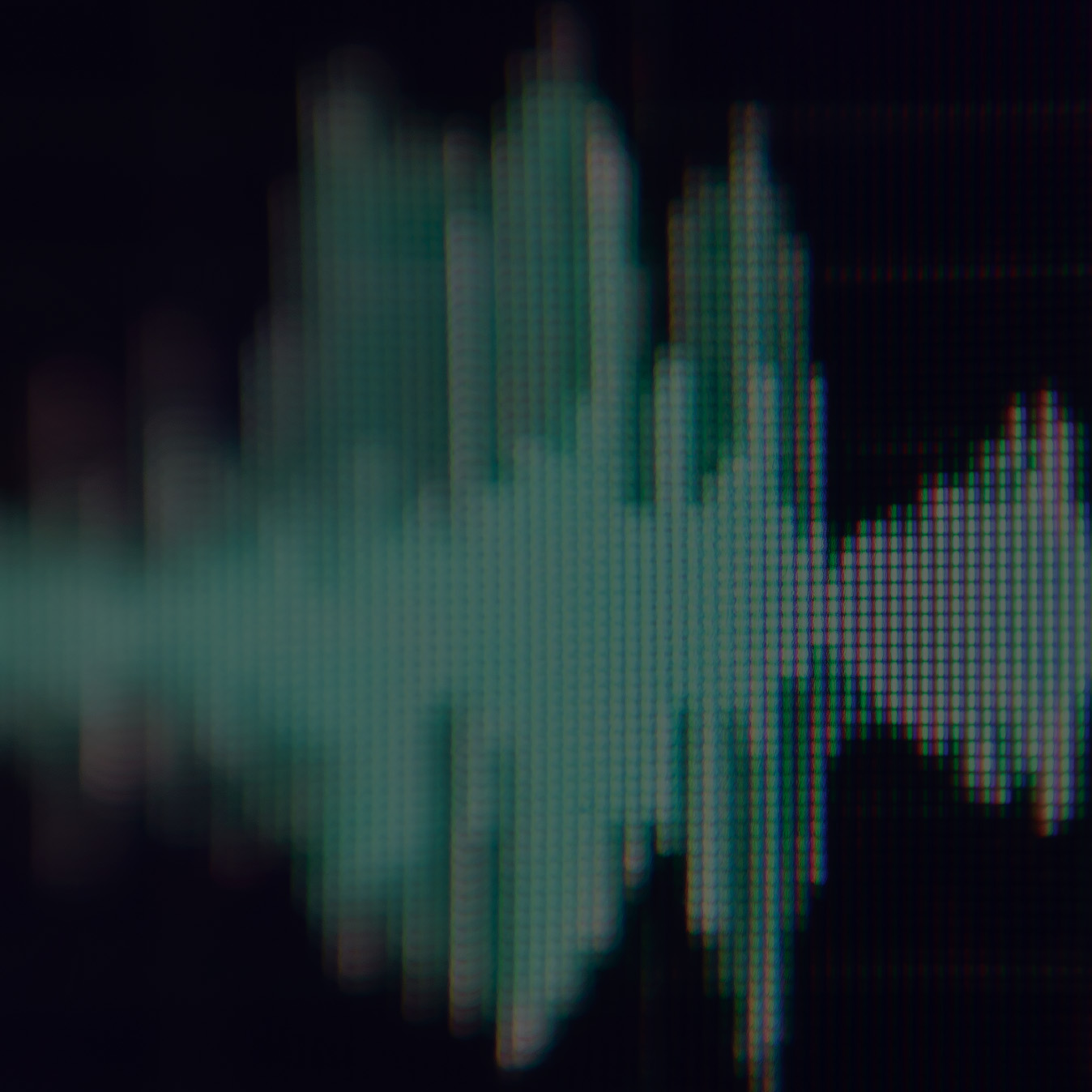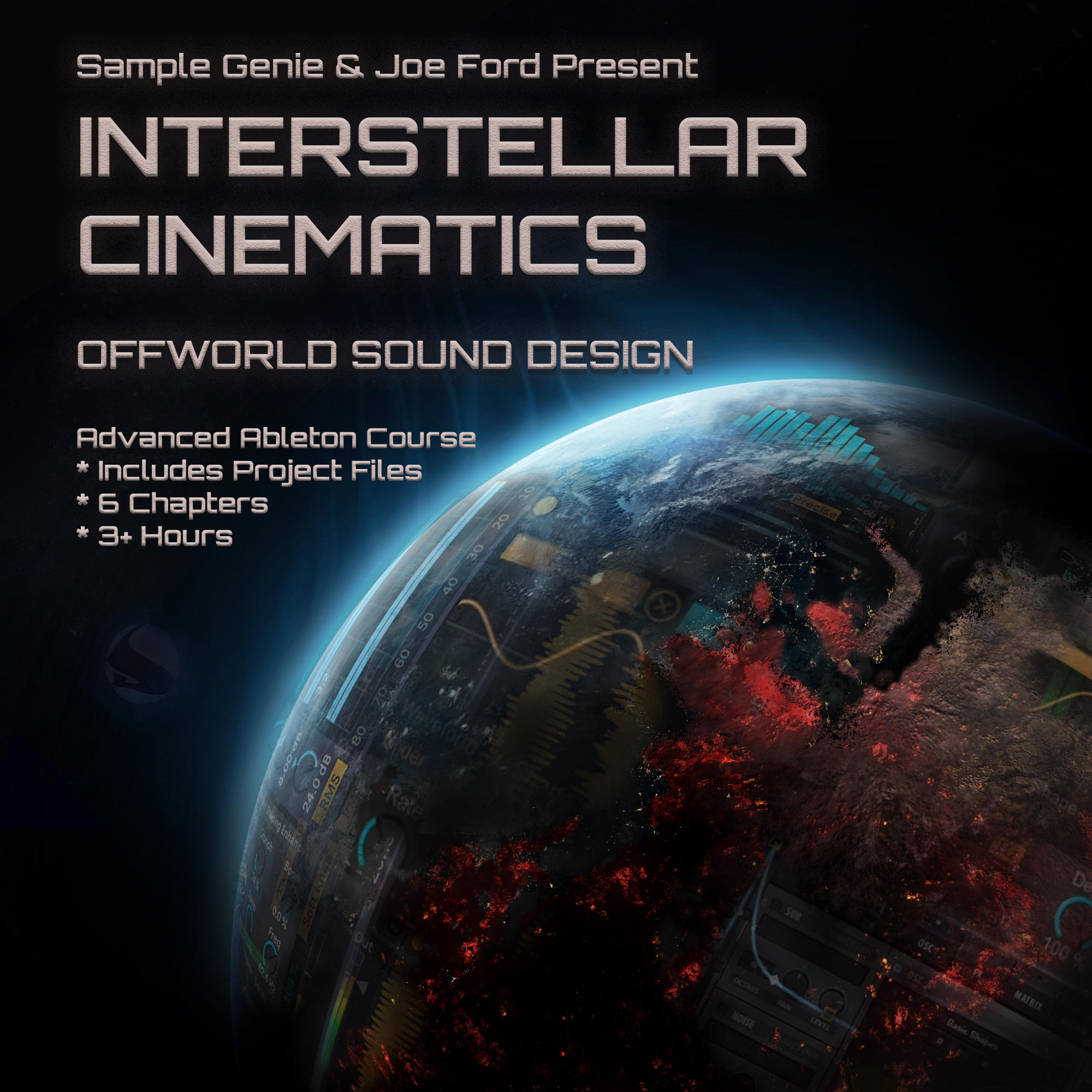ABIS – Q&A
- This topic has 24 replies, 9 voices, and was last updated 5 years ago by ,
 Mitch.
Mitch.
-
AuthorPosts
-
-
2020-02-03 at 16:44:03 #123923,
 ABIS // MarkParticipant
ABIS // MarkParticipantHeyyy gang!
I hope you enjoyed my tutorials and found somethings of interest
As I mentioned in the videos, I wanted to try and give you a perspective into how I think when making drum/break samples, and prove a point that you still can make something decent with minimal tools.
It was really hard to try and squeeze in as much information as possible into a few hours, so I’m happy to be here to answer any questions you may have related to the videos or anything production/music wise. ASK AWAY <3
Love, Mark
-
2020-02-03 at 17:24:35 #123926,
 Benjamin ZiegenbruchParticipant
Benjamin ZiegenbruchParticipantHey Mark
First of all thank you for your tutorials, I saw the first one, but the others will definitely be great.
I have a question about the Noise osc presets that you set at the very beginning of the first video.
where can i get these noise presets?
best regards
ben -
2020-02-04 at 00:16:27 #123990,
 ABIS // MarkParticipant
ABIS // MarkParticipantHey Mark
First of all thank you for your tutorials, I saw the first one, but the others will definitely be great.
I have a question about the Noise osc presets that you set at the very beginning of the first video.
where can i get these noise presets?
best regards
benMy pleasure
I made some transients in FM8 by shifting the wavetable phase and adding a pitch envelope. I made them for the video, but not sure this part was included. Nevertheless, I’ve just uploaded them here for you.
https://drive.google.com/drive/folders/1Ksc78lQXaUAVUMBnhk8uHEtFu2vkIdC2?usp=sharing
When trying to replicate drums with synthesis, you sometimes want to recreate the initial impact of an instrument being hit (Imagine a drum stick hitting a snare) which is normally a non-tonal ‘snap’. The reason I did it this way in the video was that I wanted to try and save OSC’s in serum, so I pre-made some transients which I could load into the noise OSC.
Essentially tho it’s just shifting the phase of a wavetable which can easily be done in Serum. If you are using a DAW where you can load up multiple instances of Serum on one midi channel E.G Grouping Serum’s in Ableton or using Patcher in FL, you can stack instances of serum and use one for the transient, another for the body/fundamental etc.. Just remember to make sure they are all phase-aligned so everything is sounding positive. A quick tip for that is, to set up one macro or control for every phase button in serum, so you can change the phase of every OSC avoiding any mistakes down the line.
-
2020-02-04 at 00:25:23 #123993,
 JOPPAParticipant
JOPPAParticipantyes i really enjoyed and like to see that it takes hard work to get these self made sounds to work… what is your approach on basses and mid synths i guess do you take the same approach or whats your go to synth nowadays ive been messing with phase plant made some really weird patches lol
-
2020-02-04 at 06:16:29 #124025,
 Benjamin ZiegenbruchParticipant
Benjamin ZiegenbruchParticipantGood to know. Thanks a lot for this. I’m going to watch the other tutorials today.
-
2020-02-04 at 12:21:47 #124078,
 ABIS // MarkParticipant
ABIS // MarkParticipantyes I really enjoyed and like to see that it takes hard work to get these self made sounds to work… what is your approach on basses and mid synths I guess do you take the same approach or whats your go-to synth nowadays I’ve been messing with phase plant made some really weird patches lol
My go-to synth is Serum. I still have an affection for FM8 but it was released 13 years ago and has kinda lost traction in the market with newer products with better features. I demoed phase plant a few months back and really enjoyed it, so I’ll have to purchase that soon and dive deeper into it.
But I think making basses is prob my weakest production skill. It’s something which I kind of dread, mainly because for me, it’s so hit and miss. I’ll normally set aside a few days to just make bass patches and it can happen that after three days of trying, I’m left with nothing ha
It can be a bit of a confidence rollercoaster. But I love making reeces and still doing it the old fashioned way with de-tuning, using phasers/filters pre-distortion etc.. They are super fun to make but sometimes a nightmare to mixdown in your track, due to the movement and phase aligning with your drum elements. Distortion is also pretty important, and my favs’s are: Trash, Creative Intent Trantrum, NI Guitar Rig, Amplitube, Ohmicide, Melda Waveshaper, Nick Crow Lab Tube driver. Filtering can also help create movement. I always like to do this mainly pre-distortion and my fav’s are: Serum Filters, Camelphat, Automating any EQ, Phasers & Vocoders (Ableton and FL have great stock ones) and just anything you can get your hands on.
-
2020-02-04 at 13:34:20 #124087,
 LeoParticipant
LeoParticipanthey, question on layering drums. do you layer your drums often, or not? I have a very difficult time getting my snare and kick right.
when you layer drum samples. do you make layers in the same way you would a bass sound. and then send those layers to a bus for compression and saturation?
-
2020-02-04 at 14:14:11 #124091,
 ABIS // MarkParticipant
ABIS // MarkParticipanthey, question on layering drums. do you layer your drums often, or not? I have a very difficult time getting my snare and kick right.
when you layer drum samples. do you make layers in the same way you would a bass sound. and then send those layers to a bus for compression and saturation?
With kicks and snares, I try and avoid layering samples, but it does depend on a number of things. Let’s take a kick for example. It’s not super difficult to make a synthetic kick with a saturated sine wave (which I cover in my videos) but this type of application doesn’t fit with every tune. Sometimes a tune will call for a something more acoustic sounding/real life. You can try and replicate this by adding a really short reverb (with post mid/side eq and maybe some saturation), to replicate a room recording, and add flaming type of noise layer over the top, to give the impression of a drum skin rattling, but it’s not always successful. A better technique would be to take a sampled kick drum which isn’t too over processed, like something from superior drummer or a sampled funk break, and then positively phase align a synthetic kick under/over it. It’s a bit tricky sometimes to get the phase aligning correctly, but it makes such a difference. Understanding phase will help any producer immensely in almost every field of producing. Spending a few hours reading up and watching some videos will save you alot of time in the long run, for example you can check this video” https://www.youtube.com/watch?v=PYPu96ItmaM
With snares, it’s almost the same story, but with snare tails that don’t have a fundamental frequency, I layer at free will to try and create an interesting top layer. I’ll always fade in the sample to give room for my transient (like 30ms for example), but apart from that I just analyze what I think it needs and try and achive that. Snare top layers can really come from anything, like strange foley sounds or just processed white noise. Just remember tho that when trying to replicate a snare, you are doing just that, so deconstruct how a real-life snare is hit, recorded and processed, then try and replicate that.
With hats, I don’t really pay that much attention and can end up layering a few samples. Things can become quite distorted in the hi end when you go to over the top tho, so I just try and complement the tune with whatever it needs.
-
2020-02-04 at 22:42:22 #124200,
 LeoParticipant
LeoParticipantexcellent advice, thank you. i will spend some time learning about phase. i have a rudimentary understanding of it and need to develop a more in depth understanding.
-
-
2020-02-04 at 19:28:29 #124173,
 GENIE HQKeymaster
GENIE HQKeymasterHow about using old school breaks? What are your views on using all the classic break samples from the days of old in a modern context: do you find it’s difficult to work them into the mix alongside more modern synthetic drums, or are there ways to do it? Or are you done with that sound altogether?
-
2020-02-05 at 12:56:27 #124301,
 ABIS // MarkParticipant
ABIS // MarkParticipantI love old funk breaks ALOT, but I don’t find it very refreshing or creative to work with them anymore. When I first started producing it seemed like the only real physical way to make a dnb beat, hence why everyone used them, but in today’s world, we have so many amazing tools to work with that gives me the inspiration to push my sound and development forward, to be able to create something remotely unique and spend my time producing, not hunting for break samples all day looking for luck. I think the most amazing part about funk breaks is the actual funk, the live feel and different sounding hits. So instead of sampling a break, I’ll try and recreate it, by replicating the hits and pattern. I would normally keep the sampled break at its original tempo, recreate the break (say in Superior Drummer), then after that process it as I would do with an old dnb funk break r.e. pitch it up to 172, chop it up and recreate a new pattern. It’s a long process but a really fun one with tons of learning opportunities
-
-
2020-02-05 at 08:17:11 #124247,
 waynesworldathomeParticipant
waynesworldathomeParticipantDo the questions have to be specific to the video? I’ve had the pleasure of seeing you play live, I am a bit fascinated by the way you produce your sounds. I’d like to pick your brain for a minute
-
2020-02-05 at 10:55:16 #124257,
 GENIE HQKeymaster
GENIE HQKeymasterAsk away!
Ps. Mark if you click reply instead of quote, your answers will appear underneath the questions
-
-
2020-02-06 at 03:59:13 #124444,
 FunklestiltskinParticipant
FunklestiltskinParticipantHi Mark! Bigup for the tutorial – super informative and helped a ton with thinking about drums in their different layers.
Could you go into a bit more depth on how you make your impulse responses for MConvolutionMB?
Cheers!
-
2020-02-06 at 15:54:37 #124549,
 ABIS // MarkParticipant
ABIS // MarkParticipantyeah sure! The great thing with impulses is they can be anything. I spent quite a bit of time trying all different things, but one thing that stuck is using white noise and a unison sine wave, so the impulse is tuned. I use Serum, and load in some white noise into the Noise OSC. I’ll then use OSC 1 and load a sine wave. White noise will be mono so I want to create something more interesting in the stereo image, so I FM the sine wave (OSC1) from the white noise and make OSC 1 unison with some detuning. This typically gives a little more interest.
I’ll then make impulses for every key and do a couple of octaves. I made these primarily for snare tails, and as they are tuned I can select what key I want the impulse in. It’s amazing for snare tails and for creating that resonate ‘ping’. You can also make the snare tails super long which is maybe kinda useless but really fun and goofy haha. Once I have something I like, I’ll normally render off the wet only reverb into audio, so I can be super precise with my fade-ins and outs, add some mid/side EQ and/or some distortion etc….
Here is a quick example. I just took the first snare in my library and picked the first impulse which sounded cool. The first example is the snare dry, and the second is with a convolution reverb (Abelton’s max for live Convolution. It’s free!) 50% wet, no further processing.
https://soundcloud.com/abismusic/snare-impluse-example2/s-8bRD3
I uploaded a few of my impulses to the below folder. But spend a bit of time making your own, and you’ll have crazy snare tails for life
https://drive.google.com/drive/folders/18ThCYe1xeb-wzWZZzdkv1zOttF3wUV31?usp=sharing
-
2020-02-07 at 04:02:25 #124659,
 FunklestiltskinParticipant
FunklestiltskinParticipantAwesome! Thanks Mark.
I think the tail and specifically the ‘room’ layer on snares is the thing i struggle most with re: snares.
This definitely helped!
-
-
2020-02-06 at 04:08:44 #124448,
 waynesworldathomeParticipant
waynesworldathomeParticipantYou’ll probably hate me for this, but I’m taking the chance. It’s a bit long winded, I won’t be offended if you can’t answer it all
My biggest issue right now is the mud range. No matter which way I split the frequencies of the sub bass to mid bass, it always seems to give me trouble. The sub sounds flabby and large, it’s harmonics merge together, especially with the kick hitting at the same time one of those harmonics will merge even with a bit of sidechain, their is some noticable distortion. They say loudness can be achieved in the mix but when I push the limiter hard, I can hear those subtle frequencies masking and distorting.
I want other sounds to have their weight in the track also but if I cut them too high to remove mud, it just leaves me with a weaker sound. Everything seems so delicate in that area that even when I have dealt with it surgically, it still presents a problem under limiting.
Q1. Is there a proper way to keep the clarity of other sounds without cutting all of it’s lower frequencies out (even around the 3rd octave)? Or is there a specific sort of range that we cut sounds out and leave to our bass (all sounds cut around 200hz)?
Q2. Is there a right balance/crossover point for frequencies between the sub and mid bass that will mix better? My sub usually has 3 harmonics and then I’m not sure whether the mid bass starts after those or it is apart of those.
–
My queries partially relate to loudness because I noticed that when I try to limit my mixes, they break down between -6 and -7 LUFS, I can’t seem to get over that which professional tracks seem to do effortlessly. They say it’s in the mix, so I’m investigating all the possible reasons. I don’t want to limit the crap out of my music, not even to be competitive, but if my music has masked frequencies that hard limiting is revealing, I want to know how to fix that to make my sound better at all levels.
I believe you said before that I need proper phase/stereo alignment, gain reduction and the low end taking up most of the information.
Q3. Could you go into a little more detail about this? If possible, could you think about any tunes you may have tried to make in the early days where you were seeking to achieve the same thing and what the crucial realisations you might have had.
–
Also about the overall quality of finished tracks. I consider you as one of the top producers currently, so I can confidently ask you. The overall tonal shape of your tunes sound very clean and there are no harsh spots. It sounds like there is a creamy high cut on the top, for example, getting rid of the fatiguing frequencies. Everything pops, nothing is in the way. I can feel that the mix is solid but is there additional mastering that is giving everyone that clean, expensive sound.
Q4. Is it analog gear or summing unit, do the ac convertors have anything to do with it? Is it a specific understanding of knowledge or the use of processing? Why do all professional tracks have this magical smoothness to them. I’ve seen even Noisia say they sometimes render out with just a software limiter. So it leaves me to think it’s more in the mix, I can’t disagree, but my own attempts and knowledge on the subject don’t quite meet up.
–
Q5. In your mixdowns, how do go about separating the drums from the musical elements and making them stand out. I will duck the kick from the sub and the snare fundamental out of sounds in that range, and I will also have a sidechain just for the transients. Sometimes however, I feel as if it’s just not giving me the transparency. I can audibly hear the sidechain even on it’s quickest release times. It sounds like a little warble. Even a sidechain on a dynamic EQ cuts too much away or still sound cloudy and I can hear the snap back.
–
Q6. About subs, I’ve tried giving them movement using all various methods but it makes the sub levels inconsistent even with a limiter. Almost like reese detune movement, chorusing or additional voices. The only issue with that is doesn’t mix well as subs are better with constant level. It sums to mono fine using the right approach. How else can I make a sub interesting, or do professionals literally just use clean sine subs?
Q7. This kind of relates to Q1 but is there a proper way to process the sub to make it fit the mix better. I’ve saturated, compressed hard and other things. It’s just that when searching for answers, you get a lot of conflicting information. My subs seem so large and flabby, they read -6 on my spectrum analyser but the peak could be much lower. The levels of the sub frequencies around 40hz reach to the top when limited and don’t correlate to it’s actual level, making it harder to mix. That just confuses the hell out of me. It’s not necessarily the sub but the first few harmonics and up to 200hz that sound muddy just being present. Are they supposed to be present but much lower?
–
Q8. Lastly, when I process more mid range sounds like the fillers and background sounds or fx, say with a little distortion and a bit of reverb or delay. Eventually they begin to sound really distorted or harsh, or really resonant and piercing. I might try to solve the issue by cutting of the high end but it just doesn’t sound how I want it to by doing that. It only seems to be more of an issue with higher sounds. There is times where it is really pleasing but other times the sound will unexpectedly sound broken up and low quality even though the original sound was fine. Is there an EQ technique to keep this under control or are we talking just scoop them frequencies out? I just feel like this puts the sound in a different place in the mix.
–
I know that’s a lot of questions and maybe some of it is very confusing, it is late at night and I want to make sure I get this in before you’re done answering questions. I’ve just tried to force them out a little bit so I hope it doesn’t come across as dollop.
I’m extremely passionate about gaining control over the problems I have described, so again I apologise if it’s a bit much.
Thanks a lot Mark, I think your music is fucking great.
regards,
Wayne-
2020-02-06 at 13:44:09 #124526,
 GENIE HQKeymaster
GENIE HQKeymasterGreat questions!
However, Mark… don’t feel you have to answer every bit of this (for obvious reasons!) -
2020-02-06 at 15:55:31 #124550,
 ABIS // MarkParticipant
ABIS // MarkParticipanthaha no worries! I’ll answer everything, but just need a little time, so will try and do this over the weekend
-
2020-02-06 at 16:45:10 #124556,
 HarryModerator
HarryModeratorMaybe while making more ramen broth?
"Knowledge kept is knowledge lost." - Bobbito Garcia
-
2020-02-06 at 16:49:32 #124557,
 ABIS // MarkParticipant
ABIS // MarkParticipantwhaha not this weekend
Have to play some shows and I have Felix aka ‘The Caracal Project’ coming over to make some beats
-
2020-02-06 at 22:24:27 #124643,
 waynesworldathomeParticipant
waynesworldathomeParticipantI’m sorry to drop such a huge bunch of questions on you, this is the only time I will be so cheeky as to ask so much in the Q&A’s. I’ve bought almost every tutorial Sample Genie has in the vault. I’ve spent 8 hours a day for the past year, also scouring youtube and google. I’ve really put the work in… when I listen back to my catalogue of demo’s I notice they all suffer from the same sort of issues.
I just want to add that most of my issues seem to appear when pushing the limiter. If I mix my tunes with plenty of headroom they actually sound okay, even if I jack up the gain on my soundcard it will sound alright at high levels. As soon as I bring up the limiting, the low end reaches it first (if I reduce the volume of the sub to compensate, the sub sounds distant and that ruins the mix even though it appears to hit the same level of -6 on SPAN). The mud range seems almost implicit on all my mixes unless I do some weird drastic EQ curve to the bass.
About Q8, the issue about high end sounds distorting and becoming resonant messes actually seems to be when I’ve pushed the limiter to around -6 LUFS. All my pretty sounds sound like shit then. My limiting seems destructive, so maybe I missed a principle. My music sounds best at around -8 or -9 LUFS, pushed any harder it falls apart.
People ask alot of the same questions, so I wanted to provide context on my problems specifically in hopes that it can highlight my flaws hence the giant wall of text which I am truly sorry for.
Thank you so so much! It means a lot.
[[EDIT: I guess it makes sense to share my music so you can actually hear what my issues might be. After 6 months of learning DNB, I read that I should be finishing tracks to improve. Then I made this project: https://soundcloud.com/ancientdnb
After those 6 months, I started another project for 2020: https://soundcloud.com/neolyth
The second project has more liquid focus.]]
-
-
2020-02-07 at 04:12:35 #124662,
 FunklestiltskinParticipant
FunklestiltskinParticipantDo you have any tips regarding hat/perc/cymbal layering and/or mixing to get that shuffle and funk to come through when the mix is really busy with bass/mids already? Also, any tips for getting the drums sounding ‘full’ – lots of my kits seems to be pretty flat sounding and lacking. Cheers!
-
2020-02-11 at 01:05:08 #125451,
 waynesworldathomeParticipant
waynesworldathomeParticipantI want to personally thank you for your drum tutorial. I’m already on my second run through of the whole 7 part series and no doubt I will watch them atleast 5 times over. You even answered a couple of my questions that I was going to ask about drums just in the video alone (especially the convolution one that gives the metallic snare). It’s one of the best drum tutorials on the internet. There are quite a few excellent drum tutorials on Sample Genie, got to give credit where it’s due but I’m ranking this one at the top.
((Shout out to Sample Genie, I owe you guys atleast half my techniques and knowledge. Much love to everyone, tutors and staff x))
-
2020-03-09 at 02:02:08 #131274,
 MitchParticipant
MitchParticipantHey thanks so much for the tutorials, very insightful!
Question about uploading to soundcloud / compression, How do you get your waveforms to be so full and not so filled with random peaks?
I know compression and limiting takes an important role in that, but do you have any tips ensuring everything is compressed “enough” or if its too compressed? Visually speaking I mean.
I am careful to use my ears the best I can, but I seem to be struggling with keeping peaks in check even though I saturate everything. Even if its a little.
Hope my questions make sense lol. Im sure the waveforms may not be something I should be TOO concerned with but at the same time I feel certain waveforms like yours, sound the way they do (amazing) for a reason.
Again many thanks for the tuts. Love your music.
-
-
AuthorPosts
- You must be logged in to reply to this topic.




